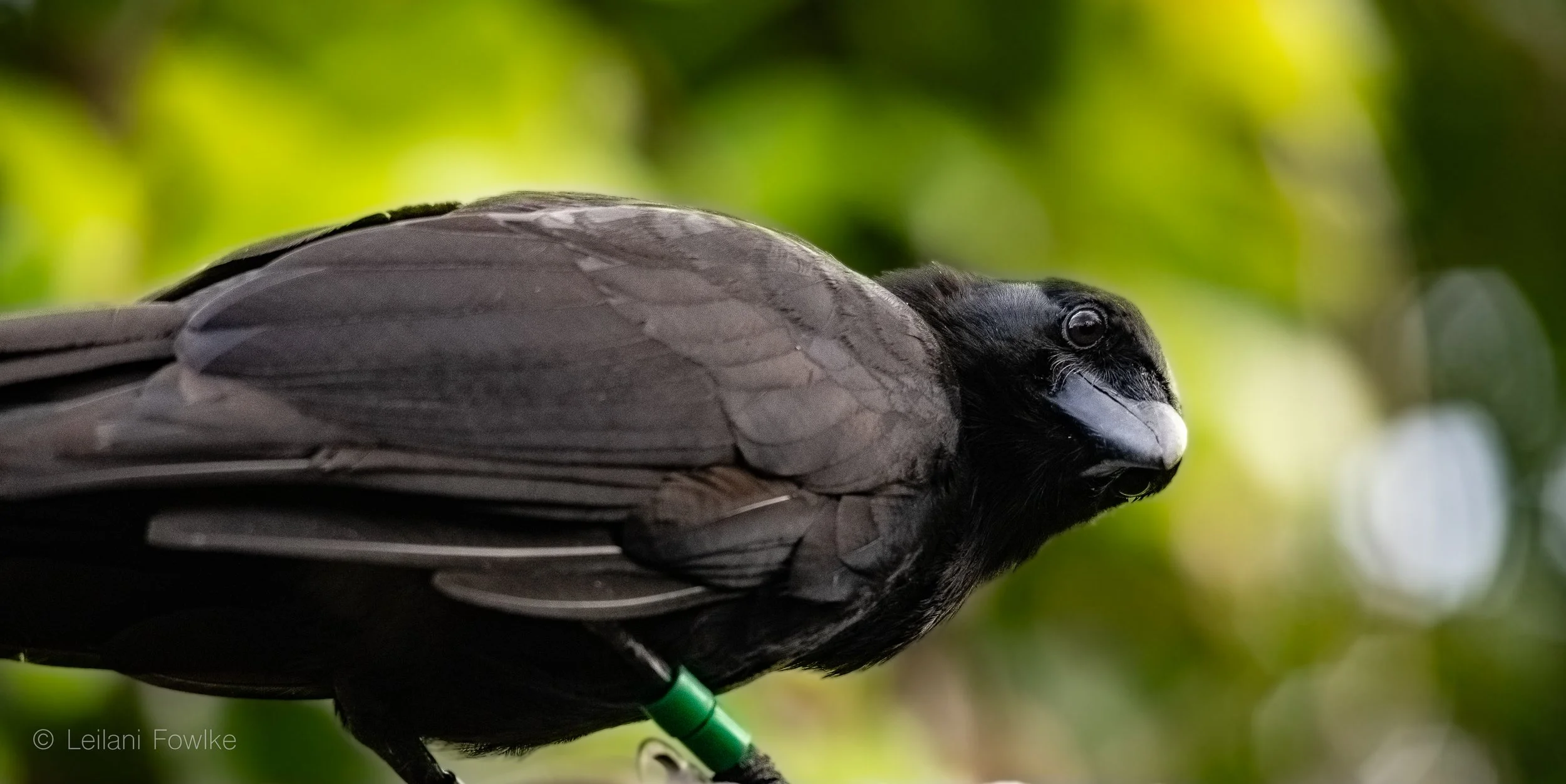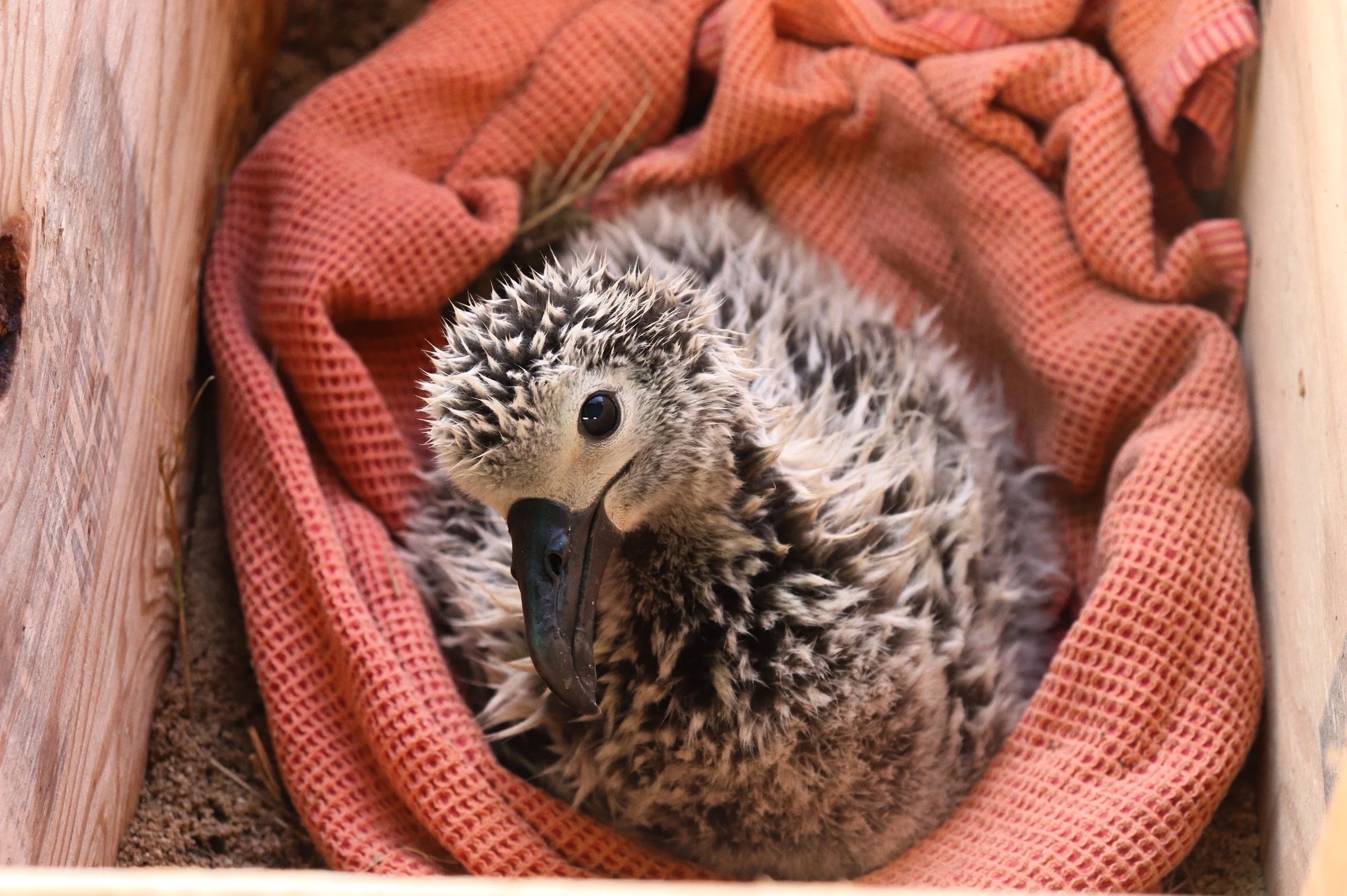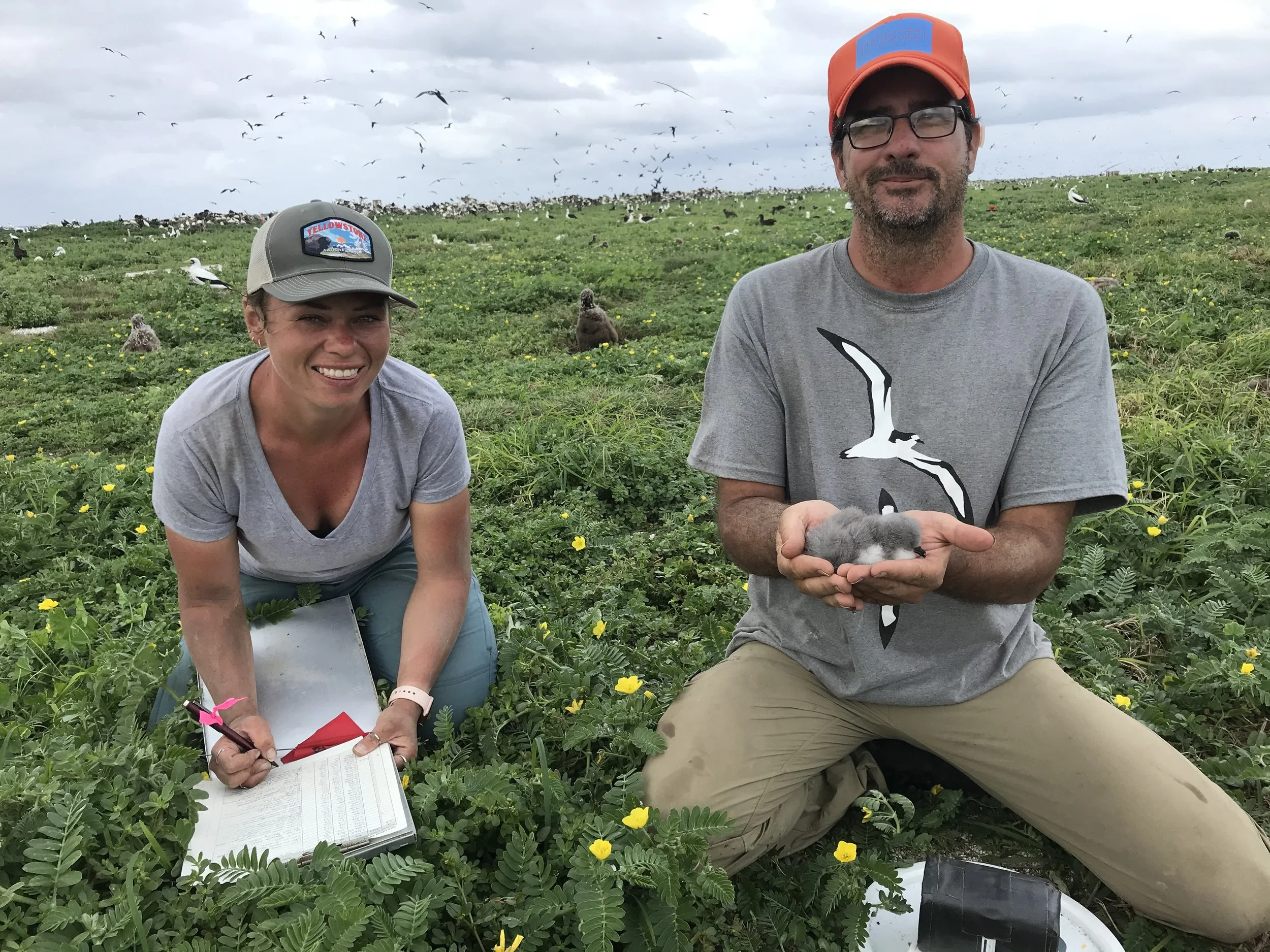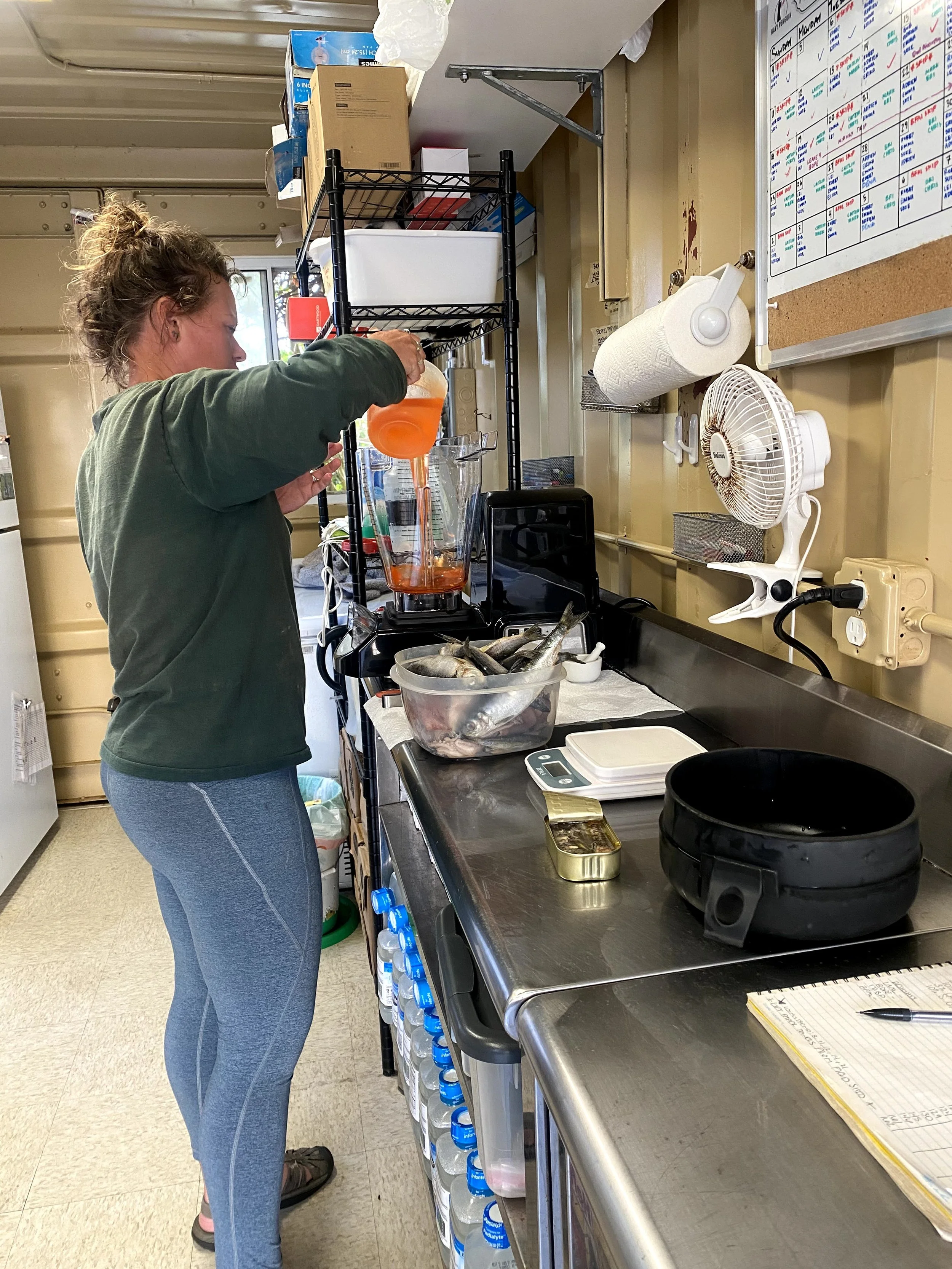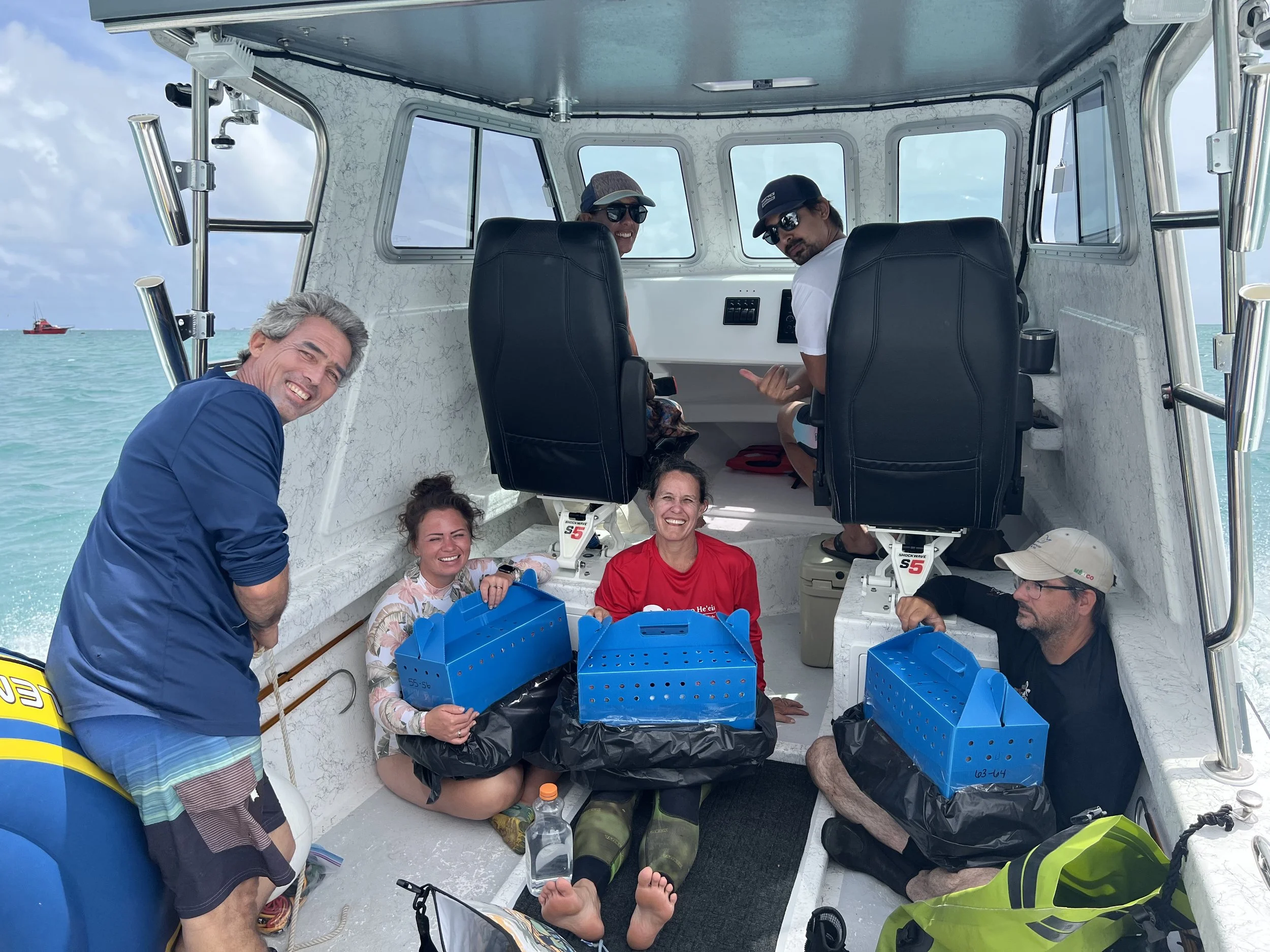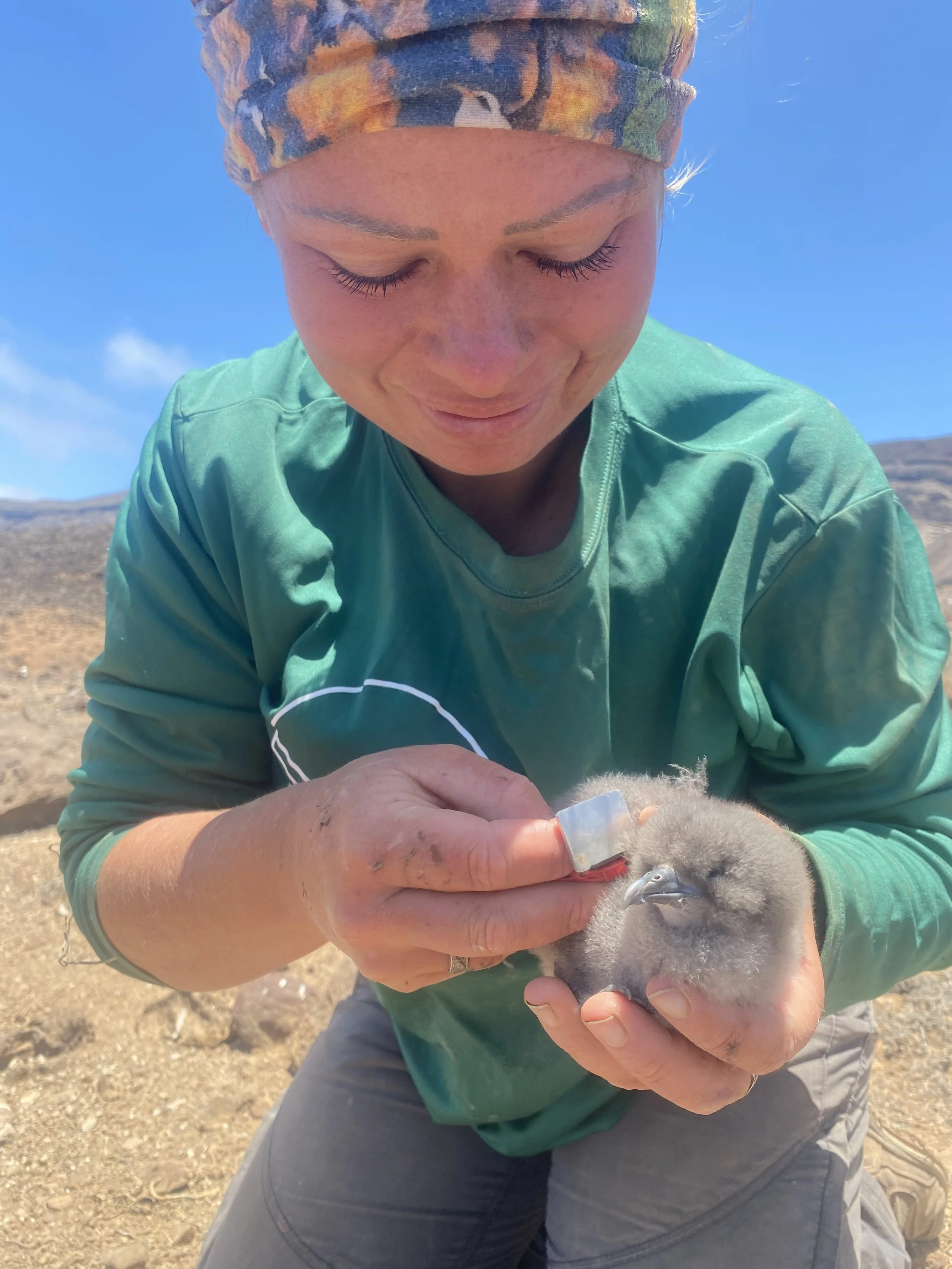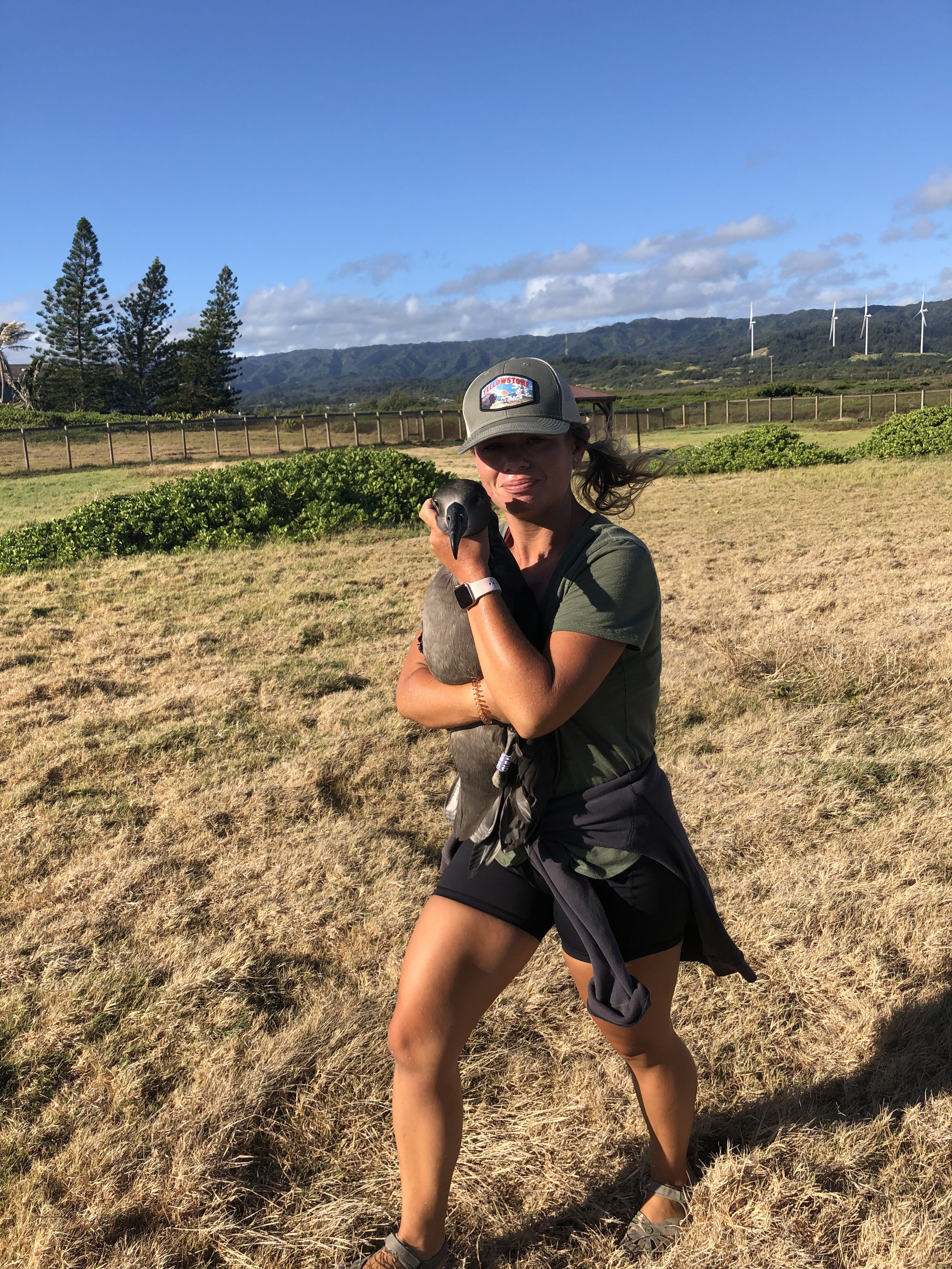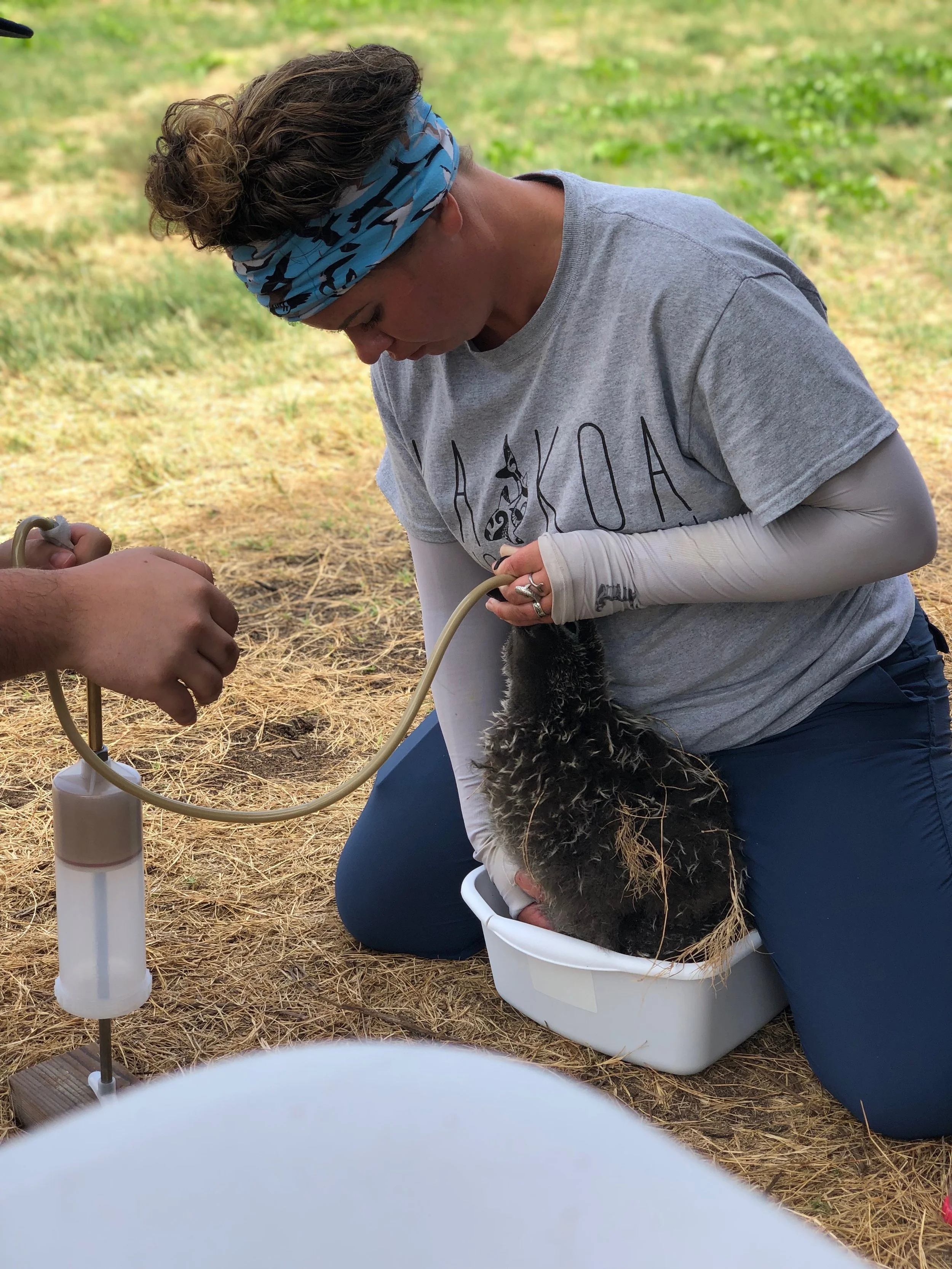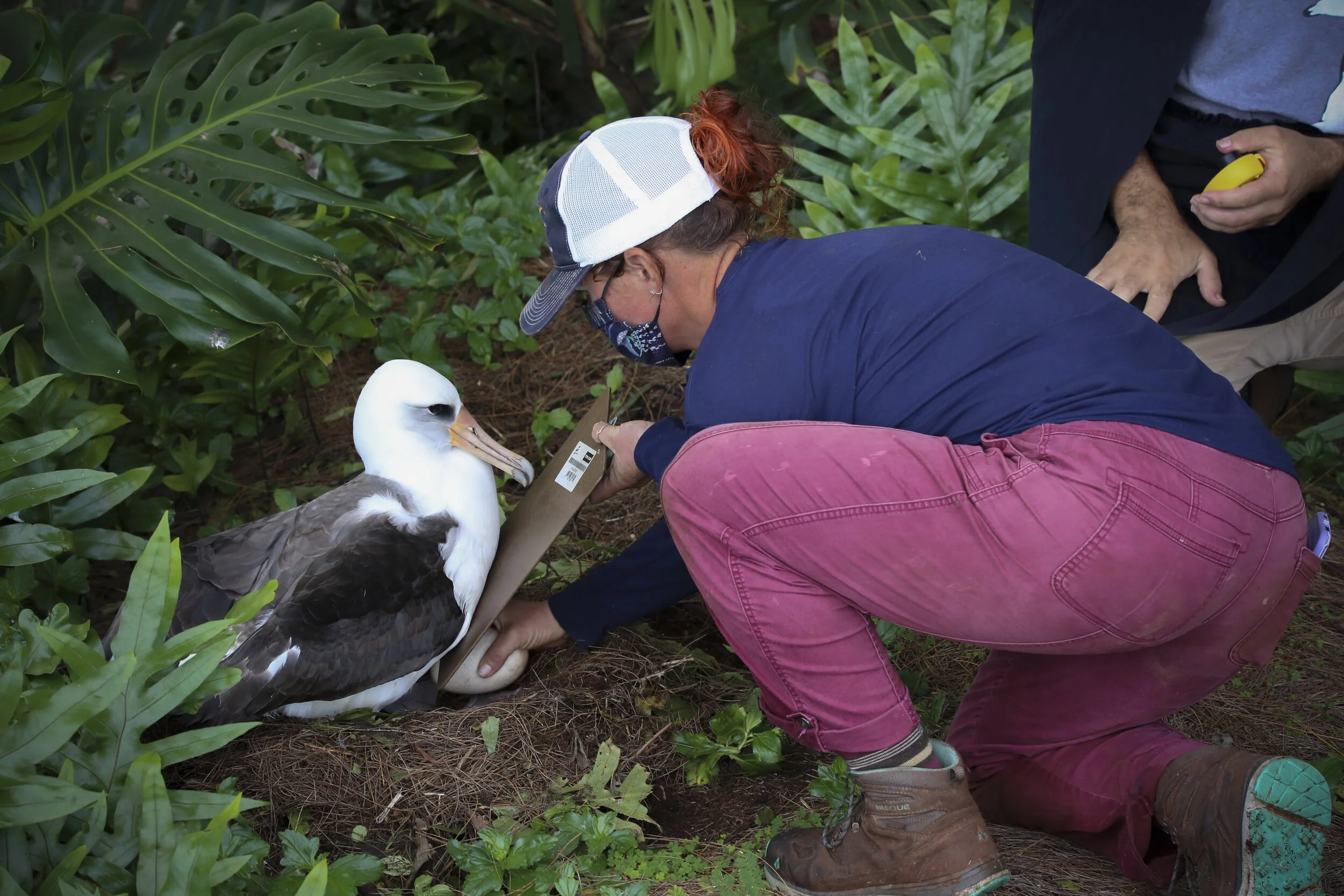
Professional Field and Husbandry Experience
CHICK REARING SPECIALIST/ RESEARCH ASSISTANT I
San Diego Zoo Wildlife Alliance, Mariana Crow Recovery Project
While working for San Diego Zoo Wildlife Alliance on the Mariana Crow Recovery Project, I was one of three staff that worked directly with rearing the Mariana Crow, or Aga. Here, I conducted artificial egg incubation, carried out medical injections and puppet feeding while the chicks were housed inside, in temperature/ humidity controlled AICUs. Once old enough to thermo-regulate, the chicks were moved outside, where I helped teach them to feed themselves, catch their own prey and prepare for their introduction back into the wild. Other duties included daily diet preparation of a variety of wild caught and imported items, sanitation of all tools associated with the chicks, aviary construction, and behavioral training with some of the non-releasable Aga. I worked with an amazing and supportive staff team with Phil Hannon and Rachael Kaiser.
AVICULTURIST II
Monterey Bay Aquarium
While working at the Monterey Bay Aquarium (MBA), I served as the lead of the Seabird Exhibit, lead of the Aviculture Research, and a consultant for egg incubation, chick rearing and avian-behavioral concerns. As lead of the seabird colony, I focused training all Tufted Puffins and Common Murres to walk onto the scale (to obtain weights), and to walk into a crate (to transport them). Being able to obtain passive weights informed myself and the vet team on each birds’ health. As catching birds is stressful and can lead to injury or death, training to crate reduced this risk to individuals for personalized care and also for the colony during colony catch ups. Further, I focused on improving chick-rearing practices by creating a “diet calculator” that deduced the amount of food each chick should be fed, based on their previous weight and known amount fed. This implementation reduced the risk of compaction and other risks associated with over-feeding chicks.
As a consultant, I helped train an African Penguin chick to eat fish offered by staff and most notably, improved the mental and physical health of the Laysan Albatross Alika. Unfortunately, Alika was trained to have a negative association with people and was afraid of people and also the water, which caused a variety of physical and mental health concerns. These negative behaviors would manifest through pacing, running or jumping to try and escape. Through intense efforts, Alika’s metal and physical health improved dramatically over the year I worked with her. Through creating a false-bottom to her pool, spending hours each day providing her with stimuli she would have received in the wild such as decoy albatross, mirrors and albatross audio recordings to simulate a colony, fans to simulate wind, use of hose and sprinklers to simulate rain, and creating a positive bond so much so, she accepted and solicited allopreening from myself and Kim Fukuda, the Senior Aviculturist, we were able to achieve this success. I worked with the team to train them how to be “true albatross” for Alika.
ANIMAL CARE COORDINATOR
Pacific Rim Conservation
I am most grateful for the time I worked at Pacific Rim Conservation as the Animal Care Coordinator. Here, I reared and released over 600 translocated Laysan Albatross, Black-footed Albatross, Bonin Petrel, Hawaiian Petrel, Tristram’s Storm-petrel and Newell’s Shearwater chicks. As a part of a small team creating a large impact, I filled many roles. The daily roles I filled included creating complete and quality diets for the translocated chicks, acting as a lead feeder for all the translocated chicks, managing all data from the translocated chicks and the returnees, trail camera management of the translocated chicks and quality inspector for sanitation of all tools and gear that came in contact with the chicks.
Outside of these daily husbandry and data roles, I also played a role in the team leadership. With the support of management, I instigated PRC’s first intern program (which included creating a custom resource website, creating and hosting orientations, leading continuing education assignments, etc), and I supervised all interns and volunteers. In 2019 training new staff and partner organizations was place into my purview.
In addition to these daily tasks, I also participated in our collection and translocation trips to the Northwestern Hawaiian Islands via plane and ship to collect Black-footed Albatross, Bonin Petrel and Tristram’s Storm-petrel chicks. I conducted similar work moving the translocated chicks to offshore islands for their final stage of fledging. Similarly, I was assigned to assist our partners, Grupo de Ecologia y Conservacion de Islas (GECI) in rearing their translocated Black-footed Albatross for their first two years. Here, I trained the staff in best chick rearing, sanitation and restraint methods for these chicks. I further assisted by leading the collection of Black-vented Shearwater reproductive life-history data to prepare this species for translocation. At the end of each season, I assisted with banding the translocated chicks both on Oahu, Kauai and Mexico.
I was provided with the best direct supervision and team members I could ask for from Robby Kohley, Megan Dalton, Rachel Fischer, Daniela Casillas, Molly Monahan, Emma Houghton, Adrien Pesque, Suzie Pluskat, Erika Dittmar and Eric VanderWerf.
